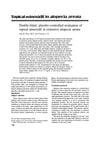Minoxidil
aka - min
- Rogaine
🛒 Where to find Minoxidil
Tracking 55 topical products and 19 oral products by companies like AllDayChemist, Amazon, HealthyAreaStore, Hims and Inhouse Pharmacy. View all 74 products »Minoxidil is a well-established drug originally developed as an oral treatment for hypertension due to its vasodilatory properties. However, its serendipitous discovery for promoting hair growth led to its repurposing as a topical treatment for androgenetic alopecia (AGA), commonly known as male and female pattern baldness. Its history dates back to the late 20th century when researchers noticed hair regrowth as a side effect in patients treated for high blood pressure. This observation prompted the development of a topical formulation for treating hair loss, which has since become one of the most widely used treatments for AGA.
Minoxidil's role in treating alopecia revolves around its ability to stimulate hair growth and slow hair loss. It is available in both topical and oral formulations, with the topical solution or foam being the most commonly used. The drug's exact mechanism of action in promoting hair growth is not fully understood, but it is believed to involve the opening of potassium channels, which leads to increased blood flow, oxygen, and nutrients to hair follicles, thereby promoting anagen phase growth and enlarging miniaturized follicles. Oral minoxidil, while less commonly used due to potential systemic side effects, has been shown to be effective in cases where topical treatment is insufficient.
Other proposed methods of actions:
-
Vasodilation: Minoxidil is a potassium channel opener, which causes hyperpolarization of cell membranes. This leads to the relaxation of vascular smooth muscle cells and results in vasodilation. By increasing blood flow to the hair follicles, minoxidil may promote the delivery of nutrients and oxygen, stimulating hair growth.
-
Increase in hair follicle size: Minoxidil is believed to prolong the anagen (growth) phase of the hair follicle cycle, thereby increasing the size of the hair follicles. This promotes the growth of thicker and stronger hair strands.
-
Antiandrogenic effects: Although minoxidil is not a direct antiandrogen, it may have some indirect antiandrogenic effects. It is thought to counteract the effects of dihydrotestosterone (DHT), a hormone that contributes to hair follicle miniaturization and hair loss in individuals with androgenetic alopecia.
-
Growth factor modulation: Minoxidil may stimulate the production of various growth factors, such as vascular endothelial growth factor (VEGF) and insulin-like growth factor-1 (IGF-1), which play a role in promoting hair growth.
-
Activation of prostaglandin E2 (PGE2) synthesis: Some studies suggest that minoxidil may increase PGE2 levels in the scalp, which has been associated with hair growth promotion.
-
Inhibition of collagen synthesis: Minoxidil may inhibit the synthesis of collagen around the hair follicle, thereby reducing fibrosis and promoting hair growth.
Research on minoxidil has consistently demonstrated its efficacy in increasing hair count and hair weight. Studies have shown that minoxidil stimulates hair growth by enhancing the proliferation of dermal papilla cells and extending the anagen phase of the hair growth cycle. It also upregulates the expression of vascular endothelial growth factor (VEGF) in human hair dermal papilla cells, potentially promoting hair growth during the anagen phase. Despite its widespread use, the full spectrum of molecular pathways influenced by minoxidil remains a subject of ongoing research.
The sentiment within the community towards minoxidil is overwhelmingly positive, with many users reporting significant improvements in hair density and coverage. However, experiences vary, with some individuals noting a diminishing effect over time and others experiencing initial shedding phases that precede noticeable regrowth. The community also discusses the challenges of incorporating minoxidil into daily routines, particularly when using the topical formulation on long or curly hair. Despite these challenges, minoxidil remains a cornerstone treatment for many facing hair loss, with users often combining it with other therapies such as finasteride, dermarolling, or ketoconazole for enhanced results.
In summary, minoxidil is a key therapeutic agent for the treatment of androgenetic alopecia, promoting hair growth and slowing hair loss through mechanisms that likely involve the enhancement of follicular blood flow and the stimulation of dermal papilla cell activity.
Research
20 / 1000+ results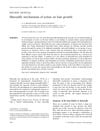
research Minoxidil: Mechanisms of Action on Hair Growth
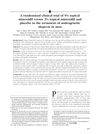
research A Randomized Clinical Trial of 5% Topical Minoxidil Versus 2% Topical Minoxidil and Placebo in the Treatment of Androgenetic Alopecia in Men
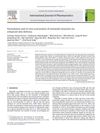
research Formulation and In Vitro Assessment of Minoxidil Niosomes for Enhanced Skin Delivery
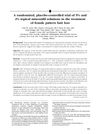
research A Randomized, Placebo-Controlled Trial of 5% and 2% Topical Minoxidil Solutions in the Treatment of Female Pattern Hair Loss
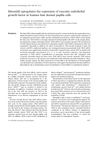
research Minoxidil Upregulates the Expression of Vascular Endothelial Growth Factor in Human Hair Dermal Papilla Cells
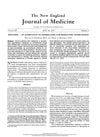
research Minoxidil: An Alternative to Nephrectomy for Refractory Hypertension
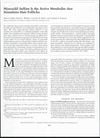
research Minoxidil Sulfate Is the Active Metabolite That Stimulates Hair Follicles
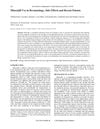
research Minoxidil Use in Dermatology, Side Effects, and Recent Patents
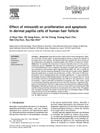
research Effect of Minoxidil on Proliferation and Apoptosis in Dermal Papilla Cells of Human Hair Follicle
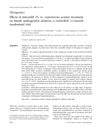
research Effects of Minoxidil 2% vs. Cyproterone Acetate Treatment on Female Androgenetic Alopecia: A Controlled, 12-Month Randomized Trial
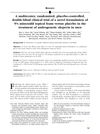
research A Multicenter, Randomized, Placebo-Controlled, Double-Blind Clinical Trial of a Novel Formulation of 5% Minoxidil Topical Foam Versus Placebo in the Treatment of Androgenetic Alopecia in Men
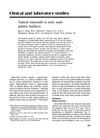
research Topical Minoxidil in Early Male Pattern Baldness
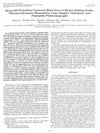
research Minoxidil Stimulates Cutaneous Blood Flow in Human Balding Scalps: Pharmacodynamics Measured by Laser Doppler Velocimetry and Photopulse Plethysmography

research Penetration Enhancer-Containing Vesicles as Carriers for Cutaneous Delivery of Minoxidil
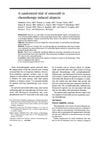
research A Randomized Trial of Minoxidil in Chemotherapy-Induced Alopecia
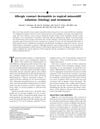
research Allergic Contact Dermatitis to Topical Minoxidil Solution: Etiology and Treatment
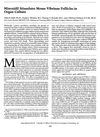
research Minoxidil Stimulates Mouse Vibrissae Follicles in Organ Culture

research Changes in Hair Weight and Hair Count in Men with Androgenetic Alopecia After Application of 5% and 2% Topical Minoxidil, Placebo, or No Treatment
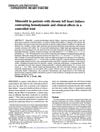
research Minoxidil in Patients with Chronic Left Heart Failure: Contrasting Hemodynamic and Clinical Effects in a Controlled Trial
